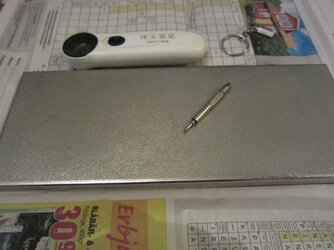Hello I recently purchased some new DMT and Atoma plates to replace a couple that had basically worn out. However out of the 6 plates all but one of them leaves an odd scratch that is well beyond the grit rating. I have had to break in plates before and I have even found an odd grit in DMT plates by running my hand over them but these new plates I can’t feel anything. I can angle the the plates to avoid the area but would prefer a more consistent fix. I also saw that one plate maker supplies a piece of hardened steel to break there plates in with has anyone tried that? Well if anyone else has had this issue ideas would be welcomed and hope everyone is doing well.
Jason
Jason


